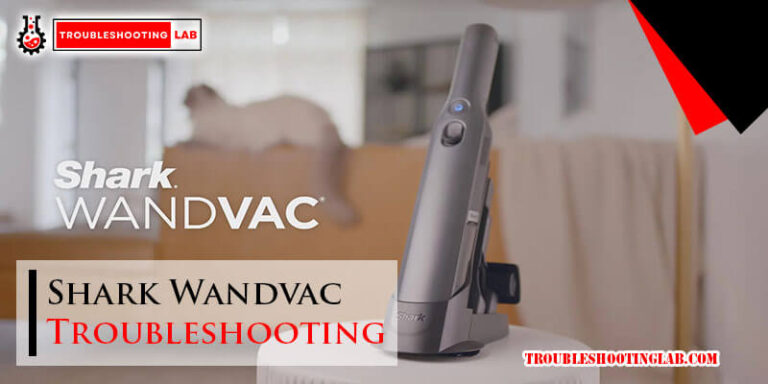Jitterbug Smart 3 Troubleshooting: Troubleshooting Guide
If your Jitterbug Smart 3 isn’t turning on, try connecting it to a working charger and outlet to see if the battery needs to be replaced. Common issues with the Jitterbug phone include connectivity problems, battery issues, software glitches, or physical damage to the device.
We will explore troubleshooting steps to address these problems and ensure your Jitterbug Smart 3 is functioning properly. We will also discuss the advantages and disadvantages of using a Jitterbug phone and answer frequently asked questions about its features and capabilities.
So, whether you’re experiencing charging issues or phone call problems, we’ve got you covered with our comprehensive troubleshooting guide for the Jitterbug Smart 3.

Introduction To Jitterbug Smart 3 Troubleshooting
Brief Overview Of Jitterbug Smart 3 As A Popular Smartphone For Seniors
The Jitterbug Smart 3 is a highly popular smartphone specifically designed for seniors. It offers a user-friendly interface, large buttons, and a simplified layout, making it easy for older adults to navigate and utilize various features. With its 5.5-inch touchscreen display, the Jitterbug Smart 3 offers a clear and vibrant viewing experience. It comes equipped with a long-lasting battery, providing seniors with uninterrupted usage throughout the day. The Jitterbug Smart 3 also boasts essential smartphone features such as a 13-megapixel camera, internet browsing, and access to popular apps like Facebook and Google Maps.
Importance Of Troubleshooting Common Issues For Uninterrupted Usage
For seniors relying on the Jitterbug Smart 3 for their day-to-day communication and online activities, troubleshooting common issues becomes essential to ensure uninterrupted usage. Understanding how to resolve common problems can help seniors avoid frustration and continue using their smartphones smoothly. By troubleshooting issues such as connectivity problems, battery issues, software glitches, or physical damage, seniors can maintain the functionality of their Jitterbug Smart 3 and prevent any disruptions to their daily routine.
Troubleshooting Steps For Jitterbug Smart 3
Having trouble with your Jitterbug Smart 3? No need to worry; we’ve got you covered with this comprehensive troubleshooting guide. Whether you’re encountering issues with the battery, phone not turning on, connectivity problems, battery draining quickly, software glitches, or physical damage, the following steps will help you resolve the most common problems.
When your Jitterbug Smart 3 refuses to turn on, the first thing you should check is the battery. Your phone may have a drained battery, especially if it hasn’t been used in a while. To fix this, connect the phone to a working charger and plug it into an outlet. If the display doesn’t light up to indicate that it’s charging, you might need to replace the battery.
If your Jitterbug Smart 3 still won’t turn on after charging, there might be a different issue at play. Try performing a hard reset by holding down the power button for at least 10 seconds. If that doesn’t work, check if the battery is properly inserted. Remove the battery, wait for a few seconds, and then reinsert it. If all else fails, it might be time to contact customer support for further assistance.
Fixing Connectivity Problems
Having trouble connecting your Jitterbug Smart 3 to Wi-Fi or Bluetooth devices? Start by ensuring that the Wi-Fi or Bluetooth settings are turned on and that the device you want to connect to is in range. If the problem persists, try forgetting the network in your Wi-Fi settings and then reconnecting to it. For Bluetooth connectivity issues, remove the device from the Jitterbug Smart 3’s paired devices list and then pair it again.
Addressing Battery Draining Quickly
If you notice that your Jitterbug Smart 3’s battery is draining quickly, there are a few steps you can take to fix the issue. First, check for any battery-draining apps that might be running in the background and close them. You can also lower your screen brightness and disable any unnecessary features or widgets. If the problem persists, it might be worth considering a battery replacement.
Resolving Software Glitches
If you’re experiencing software glitches on your Jitterbug Smart 3, a simple restart might do the trick. Turn off your phone, wait for a few seconds, and then turn it back on. If the problem persists, try clearing the cache or performing a factory reset. Keep in mind that a factory reset will erase all data on your phone, so make sure to back up any important files before proceeding.
If your Jitterbug Smart 3 has suffered physical damage, such as a cracked screen or water damage, there are limited troubleshooting steps you can take. In these cases, it’s best to reach out to customer support or visit a professional technician who can assess the damage and provide suitable solutions.
1. Checking The Battery And Charging The Phone
Having a fully charged battery is crucial for the smooth functionality of your Jitterbug Smart 3. In this section, we will discuss the importance of a fully charged battery, how to identify signs of a drained battery, steps to charge your phone correctly, and troubleshoot battery charging issues.
Importance Of A Fully Charged Battery For Phone Functionality
A fully charged battery is essential to ensure that your Jitterbug Smart 3 functions properly. When the battery is fully charged, you can enjoy uninterrupted use of your phone’s features and applications. It also allows you to make and receive calls, send messages, browse the internet, and take photos without any disruption.
Identifying Signs Of A Drained Battery
To identify if your battery is drained, look out for the following signs:
- Your phone won’t turn on even after pressing the power button.
- The screen remains black and doesn’t display any signs of life.
- You may have experienced a sudden drop in battery percentage or noticed it draining quickly.
Steps To Charge The Jitterbug Smart 3 Correctly
To charge your Jitterbug Smart 3 correctly, follow these steps:
- Connect the charger to the charging port located at the bottom of your phone.
- Plug the other end of the charger into a working electrical outlet.
- Aim to use the charger that came with your phone or a recommended charger to ensure compatibility and optimal charging speed.
- Once connected, you should see a battery icon on your phone’s screen, indicating that it is charging.
- Allow your phone to charge fully, which usually takes a few hours.
- Once fully charged, you can remove the charger from both the phone and the outlet.
Troubleshooting Battery Charging Issues
If you encounter any issues while charging your Jitterbug Smart 3, try the following troubleshooting steps:
- Ensure that both ends of the charger are securely plugged in.
- Try using a different charger or charging cable to rule out any potential issues with the charger itself.
- Check if the charging port on your phone is clean and free from dust or debris. If necessary, gently clean it with a soft brush or compressed air.
- Restart your phone and attempt to charge it again.
- If none of the above steps resolve the issue, you may need to contact customer support or bring your phone to a professional for further assistance.
By following these steps, you can ensure that your Jitterbug Smart 3 is always powered up and ready to use whenever you need it. A fully charged battery is the key to unlocking the full potential of your phone and enjoying a seamless user experience.
2. Resolving Issues With the Phone Not Turning On
Common Reasons Why The Jitterbug Smart 3 May Not Turn On
If you’re facing issues with your Jitterbug Smart 3 not turning on, there could be several reasons behind it. Let’s take a look at some common causes:
1. Drained Battery: If you haven’t used your phone in a while or have been using it extensively without charging, the battery might be completely drained. In this case, try connecting the phone to a working charger and outlet to see if it starts charging. If the display doesn’t light up or show any signs of charging, it’s possible that the battery needs to be replaced.
2. Faulty Charger or Outlet: Another reason why your Jitterbug Smart 3 may not turn on is a faulty charger or outlet. Ensure that the charger you’re using is compatible with your phone, and try plugging it into a different outlet to rule out any issues with the power source.
3. Software Glitches: Software glitches can also prevent your phone from turning on. If your Jitterbug Smart 3 freezes or crashes during operation, it might not respond to any attempts to power it on. In such cases, a software reset might be required to resolve the issue.
Step-by-step Guide To Troubleshooting And Fix A Non-responsive Phone
Here is a step-by-step guide to help you troubleshoot and fix a Jitterbug Smart 3 that is not turning on:
1. Check the Battery: Ensure that the battery is properly inserted and securely connected to the phone. If it’s loose or dislodged, reposition it correctly and try turning the phone on again.
2. Charge the phone: Connect the phone to a working charger and outlet. Make sure the charger is compatible with your phone model. Leave the phone connected for at least 30 minutes to allow it to charge.
3. Perform a Soft Reset: If the phone still doesn’t respond, perform a soft reset by pressing and holding the power button for at least 10 seconds. Release the button when the Jitterbug logo appears on the screen. This will force the phone to restart and might resolve any software-related issues.
4. Check for Physical Damage: Inspect the phone for any visible physical damage like cracks, water damage, or broken buttons. If you find any damage, it’s recommended to reach out to the manufacturer or a professional technician for repair.
5. Replace the Battery: If none of the above steps work, it’s likely that the battery needs to be replaced. Contact the manufacturer or authorized service center to get a compatible battery and follow their instructions to replace it.
Remember, if troubleshooting the phone doesn’t resolve the issue, it’s always best to seek assistance from a professional to avoid further damage or voiding the warranty.
3. Fixing Connectivity Problems
One of the common issues that Jitterbug Smart 3 users may encounter is connectivity problems. Whether it’s Wi-Fi or Bluetooth connectivity, these issues can be frustrating. In this section, we will discuss the common connectivity issues with the Jitterbug Smart 3 and provide troubleshooting steps to resolve them.
Understanding Common Connectivity Issues With The Jitterbug Smart 3
Before we jump into the troubleshooting steps, let’s first understand the common connectivity issues that users might face with their Jitterbug Smart 3. These issues can include:
- Wi-Fi not connecting or dropping frequently
- Bluetooth not pairing or disconnecting unexpectedly
- Weak Wi-Fi signal or Bluetooth range
Now that we know the potential problems, let’s explore the troubleshooting steps to resolve these issues.
Troubleshooting Steps To Resolve Wi-Fi and Bluetooth Connectivity Problems
If you are facing Wi-Fi or Bluetooth connectivity problems with your Jitterbug Smart 3, here are some steps you can follow to fix them:
- 1. Check network settings: Ensure that Wi-Fi or Bluetooth is enabled on your device. Double-check the network name and password for Wi-Fi connections.
- 2. Restart your device: Sometimes, a simple restart can fix connectivity issues. Turn off your Jitterbug Smart 3 and then turn it back on after a few seconds.
- 3. Forget and reconnect to Wi-Fi networks: If your Jitterbug Smart 3 is struggling to connect to a specific Wi-Fi network, try forgetting the network and then reconnecting to it. This can refresh the connection and resolve any authentication or configuration issues.
- 4. Re-pair Bluetooth devices: If your Jitterbug Smart 3 is unable to connect to a Bluetooth device or the connection keeps dropping, try unpairing the device and then pairing it again. Make sure the Bluetooth device is in pairing mode and within range.
- 5. Reset network settings: If all else fails, you can try resetting the network settings on your Jitterbug Smart 3. This will remove all saved Wi-Fi networks and Bluetooth pairings, allowing you to start fresh. To do this, go to Settings > System > Reset > Reset Wi-Fi, mobile, and Bluetooth.
These troubleshooting steps should help you resolve most Wi-Fi and Bluetooth connectivity problems with your Jitterbug Smart 3. If the issues persist, it’s recommended to reach out to customer support or visit an authorized service center for further assistance.
4. Addressing Battery Draining Quickly
When it comes to using the Jitterbug Smart 3, one of the common issues users may encounter is the battery draining quickly. Dealing with a phone that constantly runs out of battery can be frustrating, especially if you rely on your device for communication and other tasks. In this section, we will explore the possible reasons behind faster battery drainage on the Jitterbug Smart 3 and provide tips to optimize battery usage and extend battery life.
Possible Reasons For Faster Battery Drainage On The Jitterbug Smart 3
Various factors can contribute to faster battery drainage on the Jitterbug Smart 3. Understanding these reasons can help you identify and address the problem effectively. Here are some possible causes:
- Screen brightness: Keeping the screen brightness at a high level can consume a significant amount of power. Lowering the brightness or using the automatic brightness feature can help conserve battery life.
- Background apps: Certain apps running in the background can drain your battery quickly. These apps may include location-based services, social media applications, or other high-resource apps. Identifying and disabling unnecessary background apps can help prolong battery life.
- Push notifications: Constantly receiving push notifications from various apps can contribute to battery drain. Consider disabling unnecessary push notifications or adjusting notification settings to conserve battery power.
- Signal strength: Poor network coverage can force your phone to work harder to maintain a connection, leading to faster battery depletion. If you’re in an area with a weak signal, your phone may drain its battery more quickly.
- Battery health: Over time, batteries naturally degrade, resulting in decreased battery capacity. If your Jitterbug Smart 3 is an older device, the battery may not hold a charge as well as it used to. In such cases, replacing the battery may be necessary.
Tips To Optimize Battery Usage And Extend Battery Life
Now that we’ve identified some potential causes for faster battery drainage on the Jitterbug Smart 3, let’s explore some tips to optimize battery usage and extend battery life. Implementing these measures can help you get the most out of your device.
- Lower screen brightness: Adjusting the screen brightness to a level that is comfortable for your eyes while still conserving power can significantly extend battery life.
- Enable battery-saving mode: Utilize the built-in battery-saving mode on your Jitterbug Smart 3. This mode reduces background app activity, limits performance, and adjusts various settings to conserve battery power.
- Disable unnecessary connectivity options: Turning off unnecessary features like Bluetooth, Wi-Fi, and GPS when not in use can help save battery power.
- Manage app usage: Be mindful of the apps you have installed and their impact on battery life. Remove or disable apps that you rarely use or that consume excessive power.
Additionally, it’s a good practice to regularly check for software updates for your device. These updates often include optimizations and bug fixes that can improve battery efficiency. Keeping your Jitterbug Smart 3 up-to-date ensures that you have the latest optimizations for battery performance.
By following these tips and being mindful of your phone usage, you can optimize battery usage, extend battery life, and minimize the frustration of a quickly draining battery on your Jitterbug Smart 3.
5. Resolving Software Glitches
Software glitches can be frustrating to deal with on any device, including the Jitterbug Smart 3. These glitches can result in slow performance, freezing, or unresponsiveness. Thankfully, there are steps you can take to resolve these issues and get your device back to its optimal state. In this section, we will discuss common software glitches on the Jitterbug Smart 3 and provide steps to perform a soft reset and a factory reset, if necessary.
Common Software Glitches On The Jitterbug Smart 3
The Jitterbug Smart 3 may encounter various software glitches that can impact its performance. Some common glitches include:
- Slow performance
- Apps crashing or freezing
- Unresponsive touchscreen
- Bluetooth connectivity issues
If you are experiencing any of these glitches, follow the troubleshooting steps below to resolve the issue.
Steps To Perform A Soft Reset And Clear Temporary Files
A soft reset can help resolve minor software glitches on the Jitterbug Smart 3. This process clears temporary files and refreshes the device. To perform a soft reset, follow these steps:
- Press and hold the Power button until the Power menu appears on the screen.
- Select “Restart” from the menu.
- Wait for the device to restart.
After performing a soft reset, check if the software glitch has been resolved. If the issue persists, you may need to perform a factory reset.
Performing A Factory Reset As A Last Resort
If the software glitch on your Jitterbug Smart 3 persists after a soft reset, a factory reset may be necessary. Please note that performing a factory reset will erase all data and settings on your device, so it’s important to back up any important information before proceeding. To perform a factory reset, follow these steps:
- Go to the Settings menu on your Jitterbug Smart 3.
- Scroll down and select “System.”
- Tap on “Reset.”
- Select “Factory data reset.”
- Read the warning message and confirm your selection.
- Wait for the device to complete the reset process.
Once the factory reset is complete, set up your device again and check if the software glitch has been resolved. If the issue persists, you may need to reach out to the Jitterbug customer support team for further assistance.
Resolving software glitches on your Jitterbug Smart 3 can help improve its performance and ensure a smooth user experience. By performing a soft reset and, if needed, a factory reset, you can troubleshoot and resolve common software issues on your device.
6. Troubleshooting Physical Damage To The Device
Physical damage to your Jitterbug Smart 3 can happen unexpectedly, causing inconvenience and potential disruptions in your daily life. In this section, we will discuss how to identify signs of physical damage, steps to protect your phone from further harm, and options for repairing or replacing a physically damaged device.
Identifying Signs Of Physical Damage On The Jitterbug Smart 3
It’s essential to be able to recognize the signs of physical damage on your Jitterbug Smart 3. Here are some indicators to look out for:
- Cracked or shattered screen
- Dents or scratches on the phone’s body
- Non-responsive buttons or touchscreen
- Liquid or moisture damage
- A malfunctioning camera or other components
Steps To Protect The Phone From Physical Damage
Prevention is better than cure when it comes to physical damage. To safeguard your Jitterbug Smart 3 from harm, follow these precautions:
- Use a quality phone case or cover that provides shock absorption and protection against drops.
- Invest in a screen protector to prevent scratches and cracks on the display.
- Avoid exposing your phone to extreme temperatures, moisture, or liquids. Keep it away from water, and use it cautiously in humid environments.
- Handle your device with care, avoiding rough handling or accidentally dropping it.
- Avoid placing your phone near sharp objects or other potentially damaging items.
- Regularly clean your phone to prevent dust and debris buildup that can affect its performance.
Options For Repairing Or Replacing A Physically Damaged Device
If your Jitterbug Smart 3 sustains physical damage, you have a few options to consider:
- If your device is under warranty, contact the manufacturer’s customer support for assistance. They may offer repair services or provide a replacement if the damage is covered.
- Visit an authorized repair center or technician to assess the extent of the damage and determine if it can be repaired.
- If repairs is not possible or cost-effective, you may need to consider purchasing a new Jitterbug Smart 3.
Remember to back up your data regularly to prevent any loss during the repair or replacement process.
Frequently Asked Questions
How do I reset my Jitterbug Smart3?
To reset your Jitterbug Smart3, connect it to a working charger and outlet. If the display doesn’t light up, the battery may need to be replaced.
Why Is My Jitterbug Not Turning On?
If your Jitterbug is not turning on, it may be due to a drained battery. Try connecting it to a working charger and outlet to see if it starts charging. If the display doesn’t light up, the battery may need to be replaced.
What Are the Disadvantages of a Jitterbug Phone?
Disadvantages of a Jitterbug phone include limited phone selection, pricey talk, text, and data plans, no one-touch emergency button, and a lack of a waterproof feature.
Why Does My Jitterbug Phone Go Straight To Voicemail?
Your Jitterbug phone may go straight to voicemail due to a couple of reasons, such as poor network coverage or settings issues. Check your network signal strength and ensure your phone’s call-forwarding settings are disabled.
Why Is My Jitterbug Not Turning On?
If your Jitterbug won’t turn on, it may have a drained battery. Connect it to a working charger and outlet to see if it starts charging.
Conclusion
If you are facing issues with your Jitterbug Smart 3, troubleshooting can help resolve them. From connectivity problems to battery issues, software glitches, or physical damage, there are common problems that can be frustrating. By following the right steps, such as checking the battery, connecting to a working charger and outlet, or seeking professional help if necessary, you can get your Jitterbug Smart 3 back up and running smoothly.
Don’t let these issues discourage you from enjoying the convenience and functionality of your smartphone. Troubleshooting can save you time and money, ensuring a seamless experience with your device.






How do I change battery
Thank you for your question! To change the battery in your Jitterbug Smart 3, follow these steps:
If you’re having trouble with the process, or the battery doesn’t seem to hold a charge, it may be best to consult with customer support or visit an authorized repair center. Let me know if you need further assistance!
I cannot connect to my home screen. Can you help?
like you’re having trouble accessing the home screen of your Jitterbug Smart 3. Here are a few troubleshooting steps you can try to resolve the issue:
If none of these steps help, I’d recommend contacting Jitterbug customer support for further assistance or visiting a technician for a more in-depth troubleshooting session.
Let me know if you’d like more help with this!